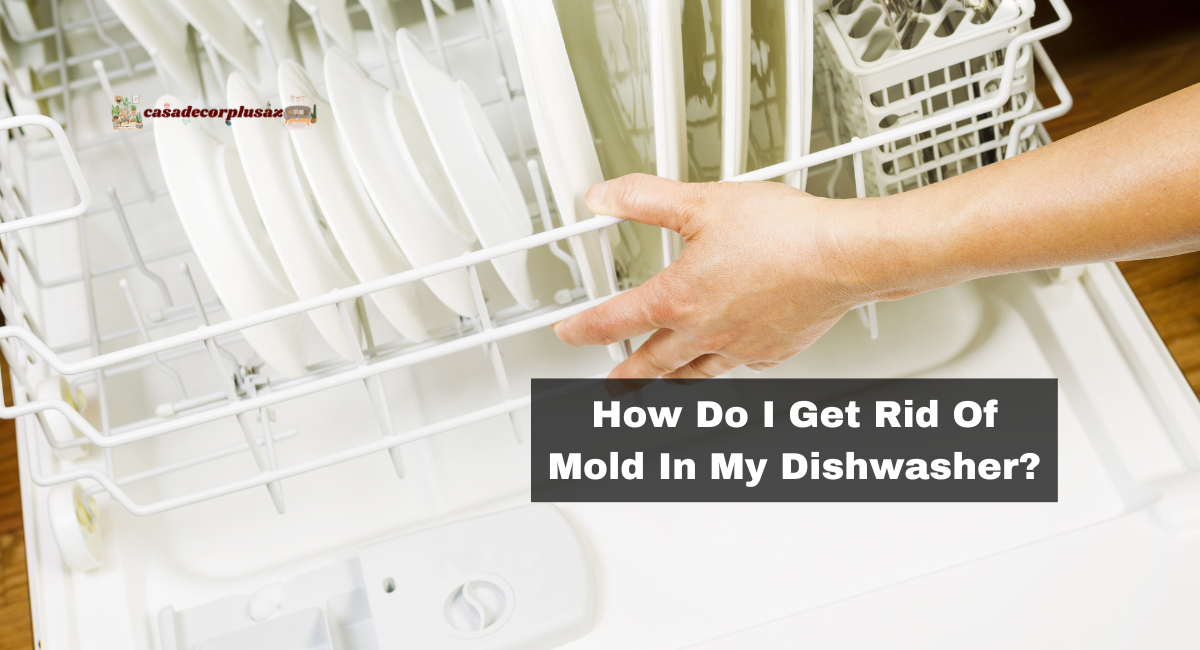The heart of a tidy kitchen is frequently the dishwasher. This vital equipment works diligently to clean our plates, utensils, and cookware of filth and residual residues. However, this workhorse’s dark, damp climate can become a breeding ground for an unexpected guest: mold.
In this article, we’ll delve into the causes of mold formation in dishwashers and explore practical actions and cures to eliminate it from your kitchen, guaranteeing a cleaner and healthier environment for your family.
How Do I Get Mold Out Of My Dishwasher?
The dishwasher filter will most certainly have some build-up, but this isn’t necessarily moldy, simply dirty; nevertheless, if the housing around the filter is black or smells musty, you can presume there’s mold on it.
Dishwashers are often dark and wet, making them a breeding ground for bacteria and mold. Even if your dishes come out sparkling clean after every wash, those concealed germs may prevent your tableware from being wholly sanitized. You can keep the fungus at bay and ensure your dishes are as clean as possible by giving your dishwasher additional attention.
1. Sanitize The Gasket
The most common place for mold and germs to form is the rubber seal inside the door, so clean it thoroughly every few weeks. To remove the grime, all you need is a toothbrush and some soapy water, but adding some white vinegar to the water can help improve the sanitizing effectiveness. Completely dry it with a paper towel when you’re finished, or the germs will start gathering again.
2. Filter Cleaning
Check the filter of the dishwasher often for food and other trash. Rotting food is a significant source of mold in the dishwasher, especially if it is moved about the washtub during cycles. To keep mold at bay, clean the filter once a week and cleanse the filter fixture well.
3. Make Room
Remove any racks, trays, and baskets from your dishwasher to begin eradicating mold. This will increase the effectiveness of the subsequent cleaning methods. Clean your dishwasher’s removable components with soap and hot water in a nearby sink.
4. Dry Out Your Dishwasher
Allowing your dishes to air dry after a wash cycle may be energy efficient and environmentally sound. Still, if you choose this option, you must ensure that your dishwasher is thoroughly dry between processes. Keep the dishwasher door open while air-drying dishes and possibly even after if there is still moisture in the tub.
5. Clean With Baking Soda
If your dishwasher is empty, you can put one cup of baking soda on the floor and run a short cycle on the hottest setting without soap to clean the inside and eliminate smells.
6. Use Bleach To Clean
Poole claims cleaning a dishwasher with bleach can deep clean the interior and eliminate difficult stains, mold, and mildew. This cleaning cycle does not require any detergent.
It’s vital to remember that you should never use bleach in a stainless-steel dishwasher or one with stainless-steel parts, as it can corrode them.
7. Clean With Lemon Juice
Lemon juice can help destroy any remaining bacteria on your dishwasher parts (while leaving a pleasant, lemony odor). Fill a small dishwasher-safe container with lemon juice and place it on the bottom. Then, repeat the process.
How Do You Prevent A Mouldy Dishwasher?
After you’ve resolved the mold issue in your dishwasher, you’ll want to take precautions to avoid it happening again.
1. Leave The Door Open
Increasing the quantity of air circulation in your dishwasher can help avoid mold formation. Except when running a cycle, avoid closing the door. Opening the gate immediately after a process will assist lingering moisture in evaporating faster, which not only helps your dishes dry but also prevents damp conditions that encourage mold growth.
2. Keep The Interior Clean Regularly
Before cleaning your dishwasher, you do not have to wait for mold to appear. Running an empty wash cycle with vinegar every month will help keep mold at bay. Wipe down seals and gaskets with hot, soapy water, and rinse up any residue in or around the detergent dispenser. Clean the filter every few months or more regularly if you don’t pre-rinse your dishes.
3. Run The Garbage Disposal
If you have a garbage disposal, it likely shares pipes with your dishwasher. Running your garbage disposal before running the dishwasher will remove any remaining food residue and prevent the potential of stagnant organic material, which can lead to mold.
How Do You Tell If Your Dishwasher Has Mold?
Most dishwashers have some mold because they are a wet and hot confined environment. A musty odor and physical proof can detect decay, but tiny mold is more likely to exist before these indicators appear.
What Does Black Mold Look Like In A Dishwasher?
The first mold that could form within your dishwasher is black mold, which can appear as decaying food, mildew, or black stains around the drain, vent, or door seals.
Getting rid of mold in your dishwasher takes preventative actions and constant maintenance. You can effectively eliminate mold and prevent its recurrence by following the steps outlined in this article, which include regular Cleaning with vinegar, baking soda, or commercial dishwasher cleaners, practicing good habits like drying the interior after each use, and periodically checking for leaks or drainage issues.
Thank you for reading the article….
